During the height of the 19th-century Victorian era, plumbing came indoors, first to the upper classes and in urban areas. That’s when a bedroom in an earlier Federal or Greek Revival house might have been converted to a bath. The basin and pitcher familiar from the old days was now a sink bowl set into a plumbed dresser or vanity.
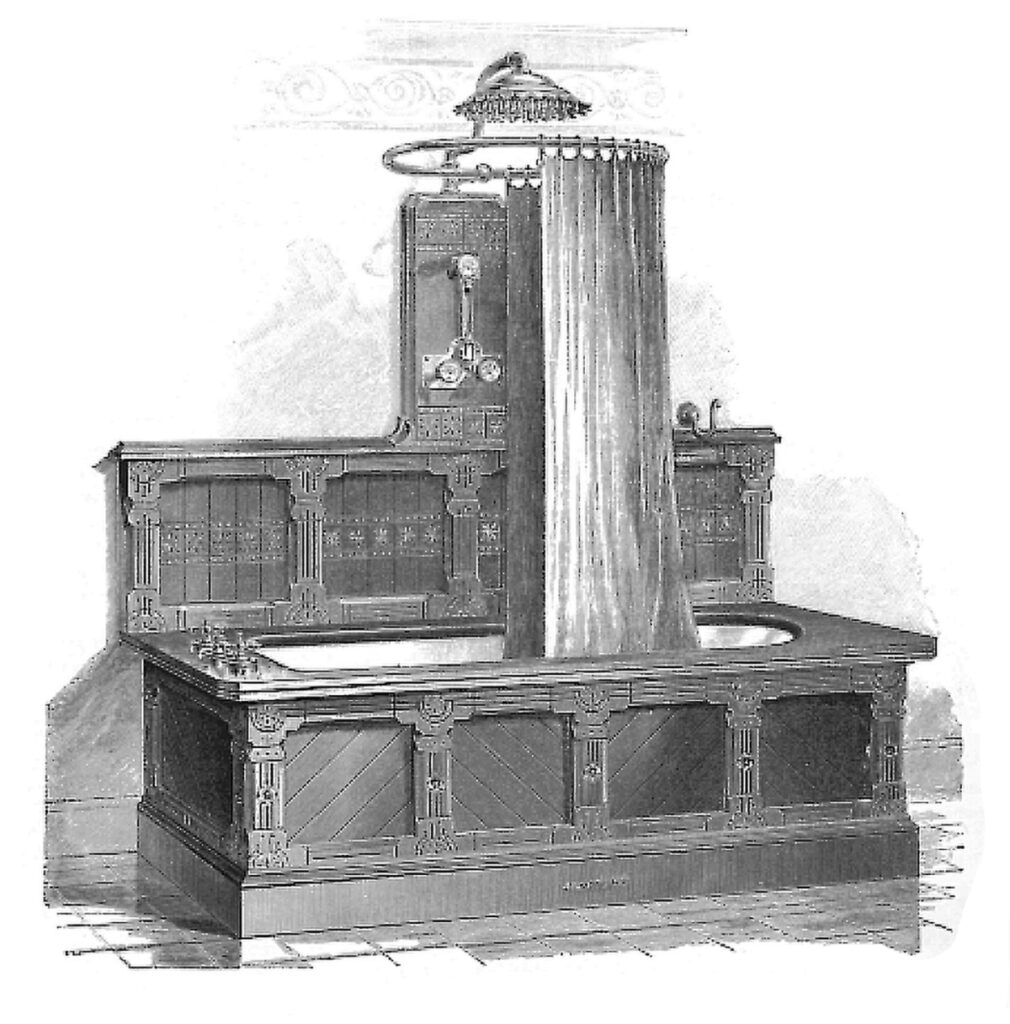
The bathrooms of the earliest adopters were, not surprisingly, large and lavishly furnished. Layout and decoration followed the conventions of other rooms: The walls had a wainscot (of wood or tile), fill, and frieze sections, if not wallpaper. Sinks and toilets were set into Elizabethan or Aesthetic cabinets sold by J. L. Mott Iron Works and other plumbing-fixture suppliers. A small rug, a chandelier, and paintings hung on the wall completed the outfitting of the room. By the late Teens, however, a general acceptance of germ theory had turned the bathroom into a sanitary white chamber of glossy surfaces and exposed plumbing.
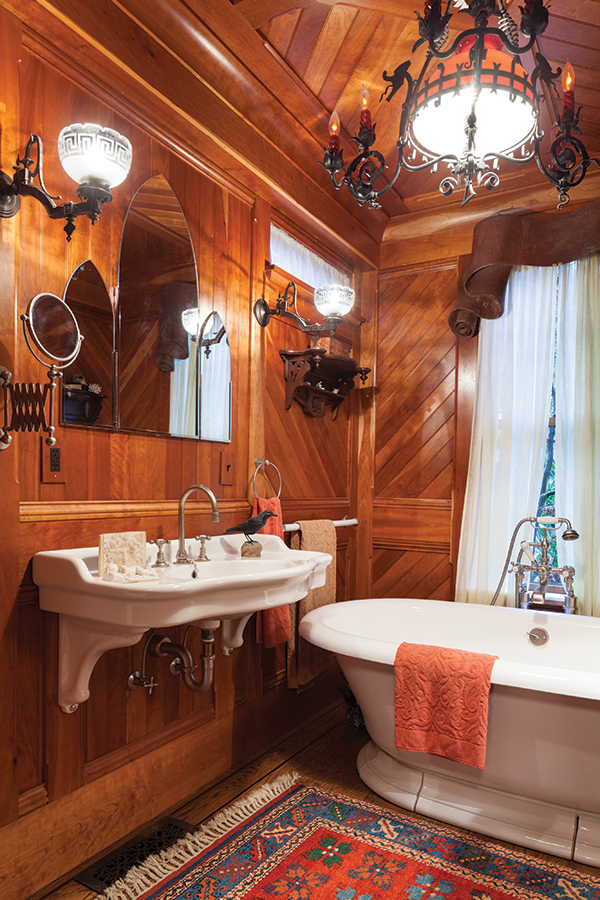
Bathrooms were and still are remodeled and updated regularly, so it’s not unusual to find a mix of periods: the original 1910 tiled floor with Art Deco lighting and a recent toilet. There’s no need to tear out serviceable materials.
As with earlier houses, a Victorian-era bedchamber or storage room may have been taken over to become the indoor bathroom. To get this look, use elements that are (or could have been) original to the house: wall finishes, mouldings and casing trim, flooring, lighting. To that period background, add plumbing fixtures—it’s up to you whether they are modern, salvaged, or period reproductions. With the popularity of
reproduction console and pedestal sinks and clawfoot tubs, 1880s–1910s bathrooms are easy to simulate.
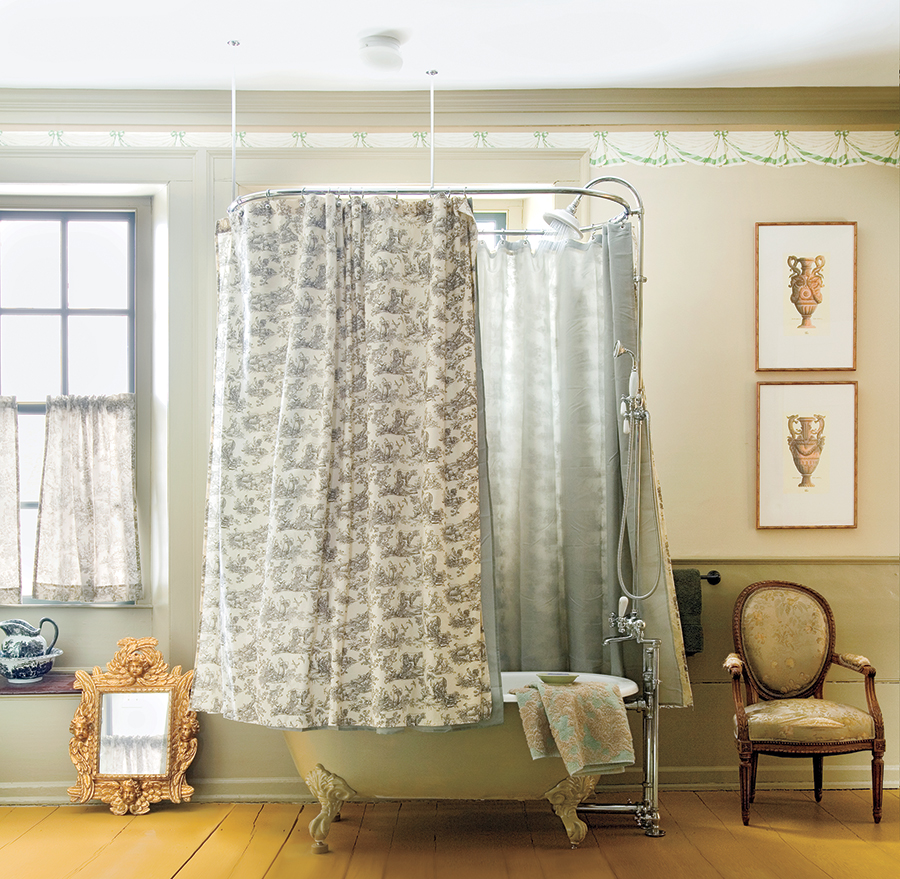
Design guidelines start with a simple layout of three fixtures, the use of such traditional materials as wood and tile, and a mix of freestanding and built-in furniture. Include salvage or an antique to keep the room from looking “too new.”
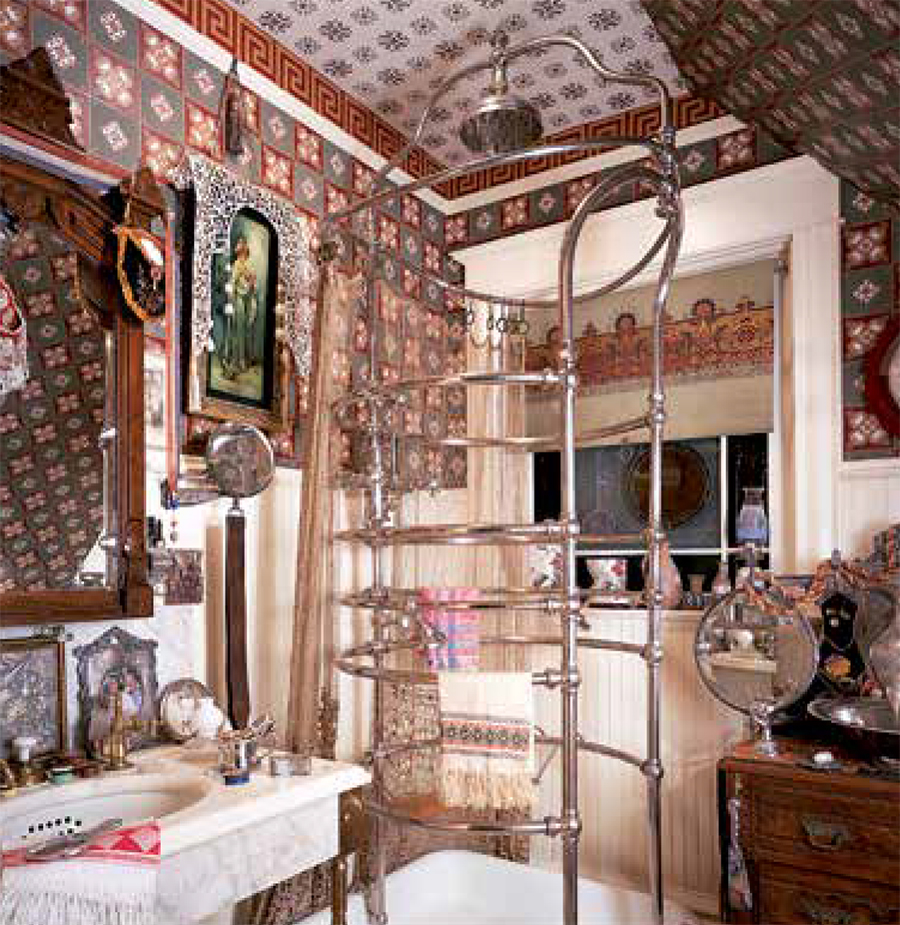
Tile is a better choice for a main bathroom (near bedrooms). In a third-floor nursery or servants’ quarters, walls more likely would have been clad in wood beadboard or shiplap, or even plaster scored to imitate tile. Similarly, wood was used more often in rural houses and summer homes. When there was “a toilet” downstairs, often it was literally only that, in a closet-like room near the back hall. Today’s first-floor powder room begs a departure, of course. Wood paneling or tile and high-end fixtures, along with a decorative treatment on walls, are now the rule.
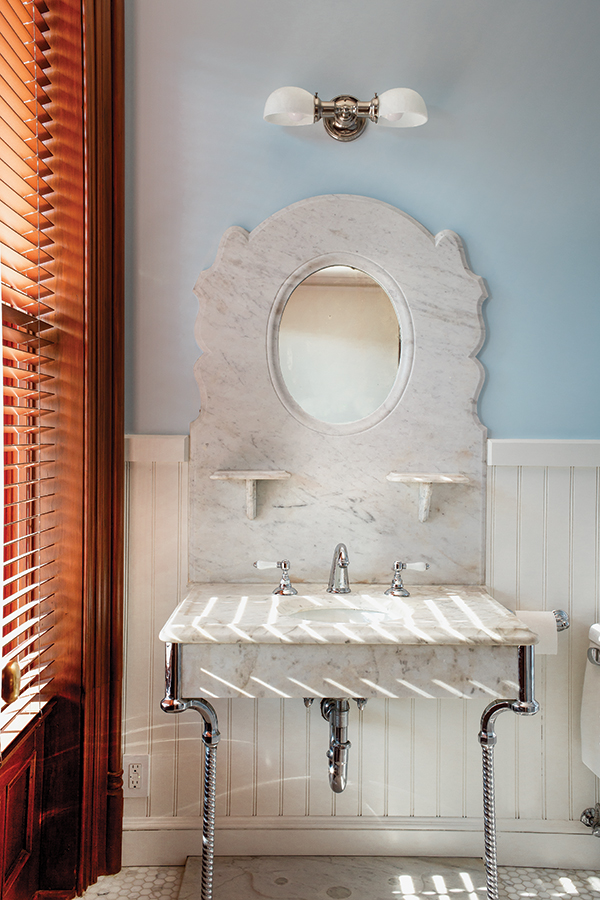
You can’t go wrong if you follow these simple tips: Use white plumbing fixtures, either “revival style” or very plain. Choose brass or nickel fittings, not chrome or dark bronze. For flooring, go with wood, or white mosaic tile. Add a Victorian light fixture and a piece of antique furniture: a wicker chair, a Renaissance Revival framed mirror. Opt for a simple, period window dressing such as stained glass or louvered shutters; balloon shades or lace; a valance and swag with a roller shade. For an opulent look, decorate walls with wallpaper, Anaglypta, or a stenciled treatment.
No reason, of course, why such retro decorating can’t be used along with double sinks, a steam bath, and a jetted tub. The indulgent spa bath and Victorian sensuality go together well.
Resources
Vintage & restoration svc.
Architectural Antiquities
archantiquities.com
Vintage plumbing fixtures
Bathroom Machineries
deabath.com
Hard-to-find period fixtures, fittings, new & salvage
Chicago Faucet Shoppe
chicagofaucetshoppe.com
Parts for Chicago Faucets, American Standard, Kohler & more
Faucet Parts Plus
faucetpartsplus.com
Discontinued parts
Graham Plumbing
grahamplumbing.com
Antique parts & plumbing repair since 1932
Mac the Antique Plumber
antiqueplumber.com
Period & salvage fixtures, fittings, parts
The Old School Plumber (Walter Parker)
oldplumbfixer.com
Antique plumbing restoration; vintage & new-old stock, consulting, repair, refurbishment
Period Bath Supply
periodbath.com
New & vintage sinks & faucets
Theiss Plumbing
hardtofindplumbing.com
Parts & fixtures from century-old business
Vintage Plumbing
vintageplumbing.com







